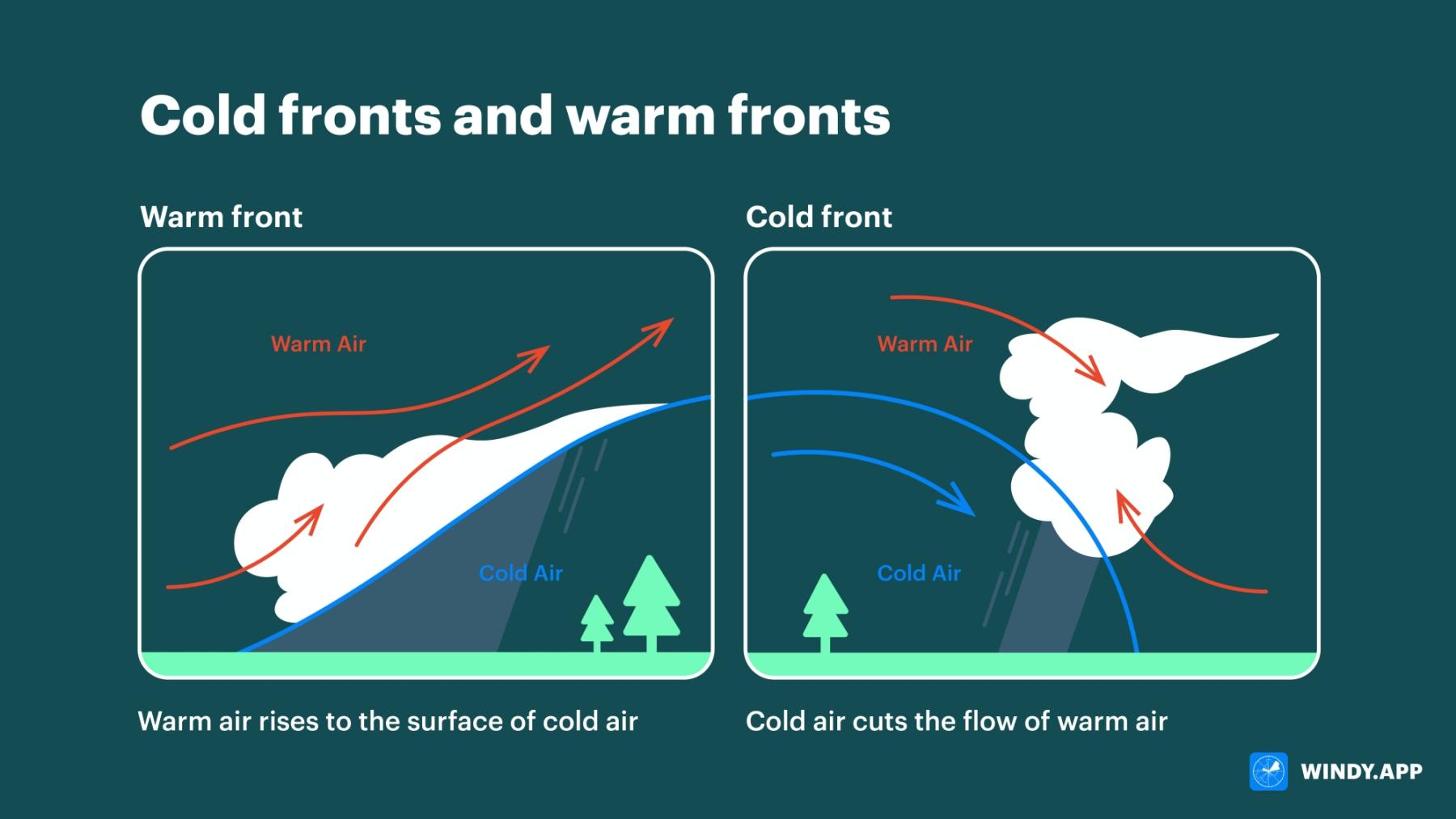
Cold and warm weather fronts
The front is the boundary between cold and warm air masses. In this new lesson of the Windy.app (WMT) meteorological textbook and newsletter for better weather forecasting, you will learn more about what cold and warm weather fronts are: how they resemble each other and how they differ.
First you need to get acquainted with the concept of air mass. If the air over a territory with a diameter of 1,600 km and more has about the same temperature and humidity, we call it an air mass. Tropical areas heat the air above them — warm air masses appear there, while the polar regions cool the air.
A front is the boundary between cold and warm air masses. If cold air moves forward, then the front is called cold, and if warm air moves forward, the front is warm. Why do we need to watch the fronts? They carry a change in the weather, clouds and precipitation are usually formed on the fronts.

Cold and warm weather fronts. Valeriya Milovanova / Windy.app
Cold weather front
It brings colder air and good visibility. Now we should go into the concept of air stability. Stable air is the one that cools less than 1 °C for every 100 meters of height. If air for every 100 meters cools more than 1 °C, then the air is called unstable.
So, if a cold front goes into stable air, then it usually carries thunderstorms and squalls. And if a cold front replaces unstable air, then layered clouds are usually formed, and then the sky becomes clear (this is why pilots prefer this front).
Usually the cold front passes in a few hours.
Warm weather front
With a warm front, the sky is usually completely overcast, at a distance of more than 2,400 km. Warm fronts pass with rains, sometimes with thunderstorms.
Besides, warm fronts pass in a few days.
Text: Windy.app team
Illustrations: Valerya Milovanova, an illustrator with a degree from the British Higher School of Art and Design (BHSAD) of Universal UniversityText: Windy.app team
Cover photo: Felipe Palacio / Unsplash
You will also find useful
How anvil clouds form: simple explanation
Latest News
Professional Weather App
Get a detailed online 10 day weather forecast, live worldwide wind map and local weather reports from the most accurate weather models.
Compare spot conditions, ask locals in the app chat, discover meteo lessons, and share your experience in our Windy.app Community.
Be sure with Windy.app.



